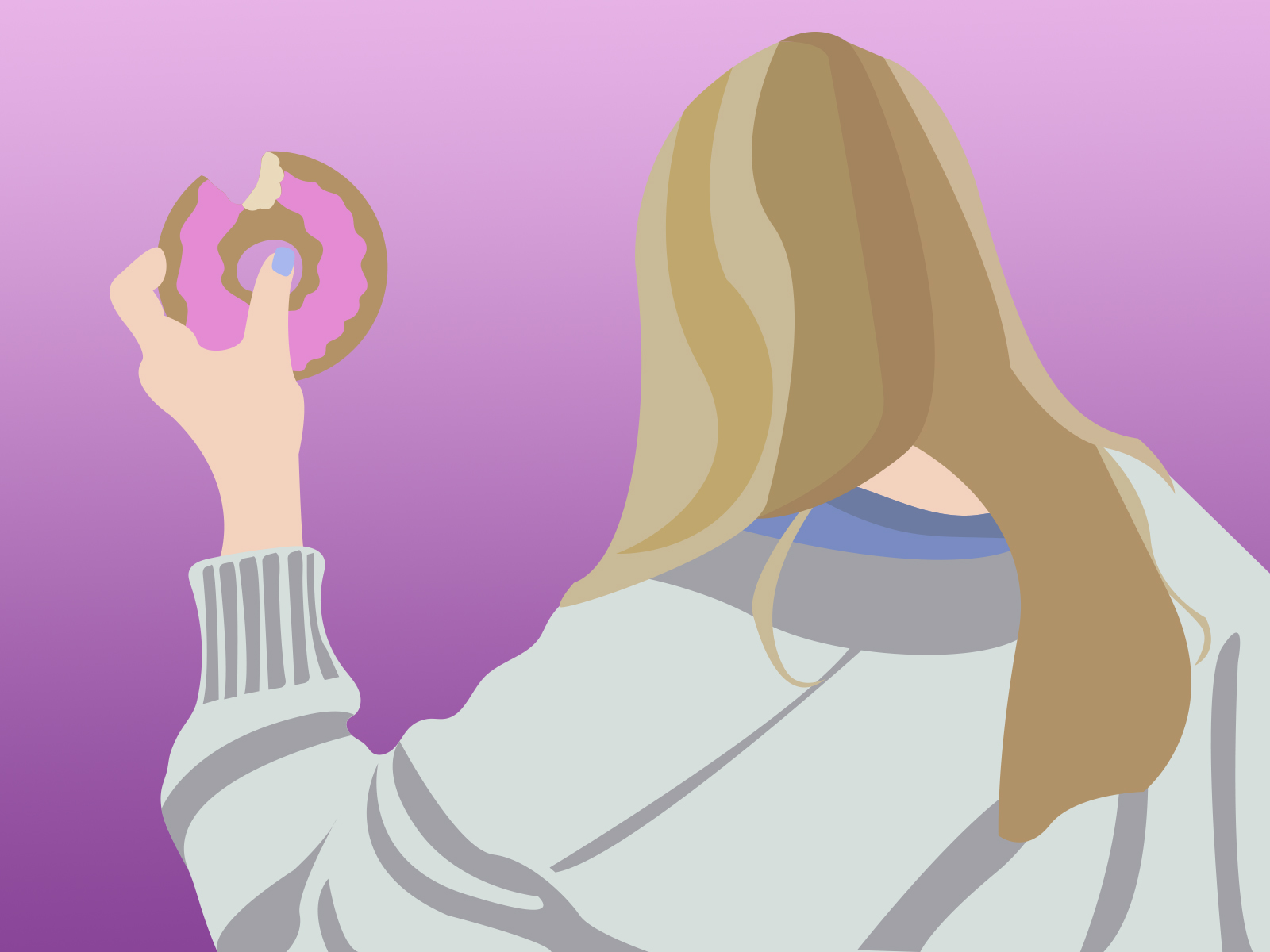Eating Disorders 101
Battling misconceptions surrounding eating disorders in society
December 8, 2016
Mental illness is a topic that has never been easily embraced by society. But when mental illness comes with physical manifestation and an aura of desirability rather than clinical suffering, it becomes even harder to understand.
And therein lies the problem with eating disorders.
To better understand this complex mental disorder, I spoke to Patti Geolat, the founder of Something For Kelly, an organization aiming to prevent eating disorders amongst children. Geolat shared the misconceptions surrounding eating disorders and how, we, as a society, can help those suffering from these illnesses.
Having a conversation
Geolat’s niece, Kelly Nobbe, died in 2009 from a struggle with anorexia nervosa, a ‘serious, potentially life-threatening eating disorder characterized by self-starvation and excessive weight loss’ (according to National Eating Disorders Association), that began in college.
“We all knew that Kelly had anorexia,” Geolat said. “It was not a secret. But we didn’t know how to have a conversation about it. We kind of talked in whispers; we weren’t comfortable with confronting her about it. We assumed that her mother was taking care of it to the best of her ability.”
According to Geolat, in order to battle the societal stigma and shame of eating disorders, it is just as imperative that not only we talk about it to those suffering from the illness- but those who are not. If someone mentions eating disorders or a person with one, have a conversation with them about it, and make sure you and the other person really understand what the disorder is.
Eating disorders are universal
As Geolat likes to say, “It’s not a rich white girl problem.” According to the National Eating Disorders Association, the incidence of eating disorders in the United States is similar amongst all races- Whites, Hispanics, African Americans and Asians.
Besides race, we must also consider gender, as it is a commonly held misconception that eating disorders lie solely in the ‘feminine’ premise of body image. However, it is important to keep in mind that males can have eating disorders too. Although you might not expect it, 5 percent to 15 percent of anorexic and bulimic patients and 35 percent of patients with binge-eating disorder are male.
Seeing the considerable number of people who may happen to both identify as male and have an eating disorder, it is imperative that we take an action to attack existing misconceptions of the demographic with the illness.
This is only possible if we consciously detach ourselves from gender-normative stereotypes and treat the subject of body image with boys just as cautiously as we should with girls. Be careful about teasing your male friends, even casually, about their weight or appearance. It can have a much more serious effect on them than you intend.
Enough with the labels
A significant thing that a person must be careful about when approaching the topic of eating disorders is labels. A label thrown casually around in conversation can become a dangerous catalyst for existing body image sensitivity- especially if that label is misinformed.
One such label that I have recently encountered is the careless substitute of the word ‘anorexic’ for a thin person. Not only is this extremely insensitive towards the legitimacy of eating disorders as a severe and real disease and rude to the person labeled, it is also deceiving. Forty percent of people with eating disorders do not have a severely low body mass index (a measure of a person’s weight-to-height ratio), according to a survey by the UK-based charity Beat.
“It’s really important that [‘anorexic’] just not become a catch-all term for people who are very thin,” Geolat said. “Out of all the mental illnesses that have been identified, anorexia and other eating disorders have the highest fatality rate. So people need to take that incredibly seriously when they just slip around that term.”
‘Just go eat’
When Geolat’s niece, Nobbe, died, the cause of death written on her death certificate was ‘heart failure’. Not ‘anorexia nervosa’. Nobbe had undergone such extreme weight loss due to her eating disorder that her organs had become critically damaged. But the physical effect of the disorder- and not the disorder itself- was identified as the problem.
Although this was a medical necessity, it is important to note that what ultimately killed Nobbe, heart failure, began with her mental illness, anorexia nervosa. It is what was killing her mind that eventually killed her body.
Because of the evident harm that eating disorders can cause, it is of paramount importance to acknowledge the severity of a person’s mental issues as the source of what is causing their debilitation, rather than seeing the eating disorder as merely a problem of weight loss with a simple solution.
“People say things like ‘What’s wrong with you? Just eat a sandwich. Get over yourself’,” Geolat said. “But the behavior of the eating disorder is a manifestation of the problem. You can’t ignore the behavior. But you can not correct the problem merely by forcing calories down somebody’s throat.
“At some core level you have to go back to the cause and say, ‘Why do they feel that way?’ Because eating disorders are not only about physicality. It’s about how somebody feels about their physicality.”
Destroying stigmas starts with acknowledging that those stigmas exist. By understanding our misconceptions about eating disorders and correcting them, we are on the path to understanding those who suffer from eating disorders.
And, we are one step closer to leading them to recovery.
